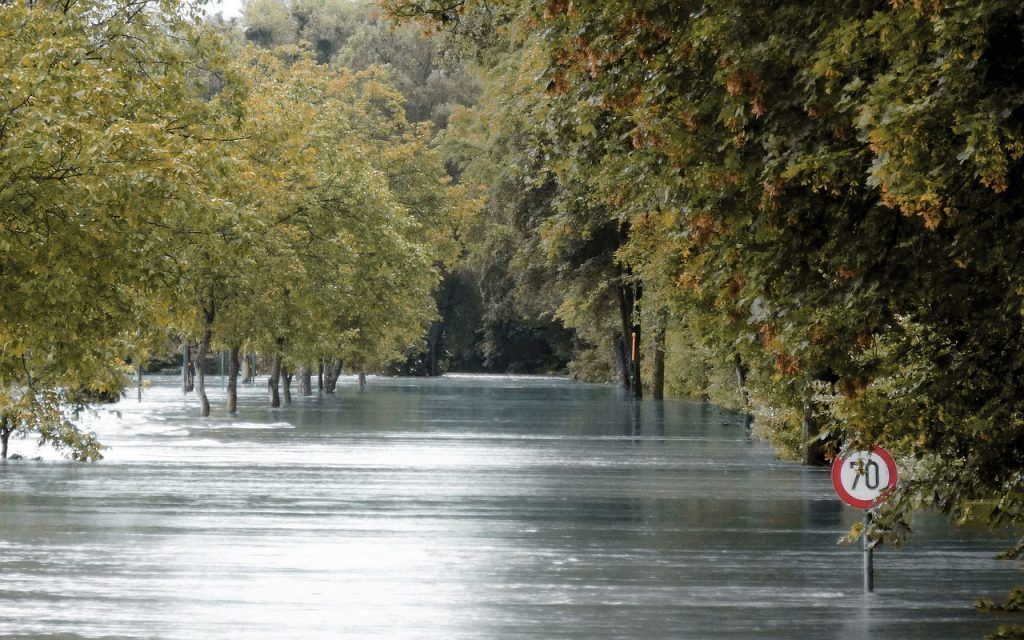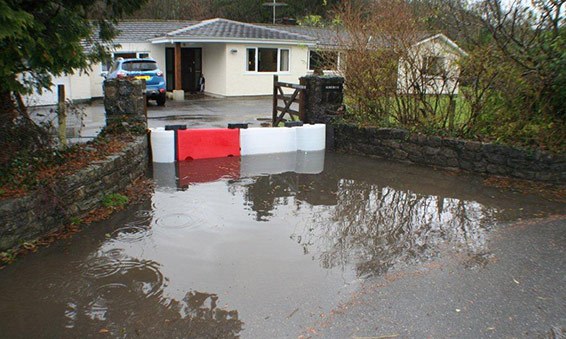Environmental scientists keep scaring us with stories of global warming, and sometimes it really seems that we encounter flooding more often than previous generations. Whatever the cause of flooding it is most likely here to stay. So rather than worrying about it – it is better to have a plan of action in place and know how to prepare for a flood to minimise the impact if it does happen to you. That’s why Fluvial Innovations has put together a comprehensive list of tips to help you prepare for flooding.

Check if your property is in a flood risk zone
The UK flood map has changed a lot in the last few decades. If you’ve been living in your property for a substantial amount of time, you may find that you’ve been included in the risk zone only recently. The best resource for checking the flood risk zones is the UK Government website: https://flood-warning-information.service.gov.uk/long-term-flood-risk
If you’ve been included only recently, it might be a good idea to get in touch with your insurer and check that you still have a sufficient cover. Scroll down to our flood insurance tips for more information.
Also keep on top of the news and stay tuned to local radio stations. All flash-flood warnings are going to be broadcast through the radio. It’s also worth signing up for Met Office email alerts and downloading the Met Office mobile app which as of the most recent version (1.6.) includes National severe weather warnings. You can download the app from this address: http://www.metoffice.gov.uk/services/mobile-digital-services/weather-app
Have an emergency kit at the ready
If there’s something we can learn from Bear Grylls, it’s the importance of being prepared. Put together an emergency flooding kit that includes warm clothes, a list of emergency numbers, insurance policy, first aid kit, spare phone battery, flashlight (preferably one with a dynamo), bottled water, cash and credit cards, all necessary medication, wind-up radio, toiletries, wellies and waterproof clothing.
Aim for a 3-4 days of supply although in most cases, especially if you get evacuated, the council will have taken care of most of your needs. It’s also a good idea to have emergency numbers saved on all family members’ phones.
Know the escape routes
It pays to know your area and the to map out the best evacuation routes in advance. Don’t confine your existence to the cul-de-sac. Take a relaxed drive around the area and make sure you are familiar with the terrain, one-way streets, potential traffic congestion hostspots and other local peculiarities.
It is VERY important not to drive over flooded roadways! You never know how fast or deep the water is, or what it's done to the structure of the road as this video illustrates.TURN AROUND, DON'T DROWN!
Posted by U.S. National Weather Service (NWS) on שבת 4 יוני 2016
After you’ve received the flood warning, move vehicles to higher level but only if it’s safe to do so. As you can see in this video, the truck driver narrowly escapes death by dodging a large pool of standing water. You can never know what hides underneath the water. There might be a sink hole, a broken drain or other unexpected objects that could make your car stuck and put your life at risk. Vehicles should only be moved prior to the flood.
The home: how to prepare for a flood
Empty fridges, freezers and washing machines and leave their doors open. That way the floodwater can escape the appliances as it recedes.
When evacuating, switch off the mains power, gas supply and water supply. Also unplug all electrical devices to prevent electrical shock when the electricity is reconnected. Many people actually don’t know how to do this or indeed the location of their fusebox even though they’ve lived in their house for many years. Make sure you take your pets, close the doors and windows. Look out for your neighbours, especially elderly ones. However, don’t attempt to re-enact the A-team’s heroics, unless the evacuation route is clear of water.
Upstairs
Have a safe storage. It’s highly unlikely for a two-storey house to sustain flood damage on the first floor. Keep all your irreplaceable items on the top floor – photographs, expensive electrical devices, data storage and other items of value.
Outside your house
Do you store any chemicals, fuel or other materials that could cause damage if released into floodwater and the water system? For example, if you’re a farmer or gardening enthusiast and your surroundings are prone to flooding, you should make sure all chemicals and manure are stored in a way that floodwater can’t reach it. Otherwise you might end up causing a local disaster.
Think of flood defence systems
Remember that sandbags are inefficient for flood defence. As far as the ways to prevent flooding are concerned, it doesn’t matter that they’ve been around for ages. If you want to prepare for a flood, you will need a more modern solution to flood prevention.
Some people call sandbags a placebo. Others would argue that they’re worse than a placebo because they lull people into a false sense of security while not providing any tangible flood protection. The only thing a sandbag is good for is to block toilet bowls from sewage back-flow. But even there, it doesn’t provide a 100% protection. The best option is to install back-flow valves on all WC points, baths, sinks and any other outlets that can “cough up” toxic sewage waters.
When it comes to flood defence systems, the last few years have seen several decent inventions, some of which are affordable for households. Take a look at Floodstop barriers for an example of a good modern flood defence system.
Airbricks and other openings
If your house has airbricks built in or if it has any other openings or cracks in the walls, make sure these are dealt with prior to the flood season. There are products specially designed to secure airbricks.
Flood insurance tips
You often hear horror stories of insurance companies refusing to pay up. The majority of insurers step up to the mark and prove to be rather helpful, however there is always the risk that they will find a loophole to wriggle out of their responsibilities. That’s why it’s important to make sure your flood insurance policy is “watertight”. Read the small print to understand your cover for flooding. Some home insurance policies don’t cover flood damage and you definitely don’t want that if you are at risk.
There are also cases when the homeowner has failed to disclose the fact that their house is in a risk zone. Most insurers will have a flood risk map built into their quoting system, however, there are ones that won’t so it’s your responsibility to answer all their questions to the best of your knowledge – including questions about potential flood risk.
From 2015 many homeowners residing in a flood risk zone are finding it easier to get cheaper home insurance. A Government scheme called Flood Re is designed to cap the policy cost of flood prone homeowners. Depending on your council tax band, flood-related cover is capped at £210 per year. Flood Re is currently available to less than 400,000 homeowners in the UK. To find whether you’re eligible head to http://www.floodre.co.uk/homeowner/ and input your post code. If your areas is covered the website will suggest cheaper home insurance options for you.
In the meantime, take detailed photos (or better yet videos) of your property now before the flooding has actually occurred. Also make sure your insurance inventory list is up to date and remember to keep it up to date on a regular basis. If an item is not on the inventory list, there is a risk that the insurer won’t cover it.
Using these simple steps to prepare for flooding will make sure your family is safe and material damage is minimised should it happen to you.
